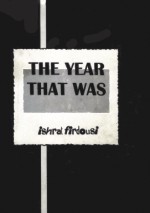Books on 1971
Khademul Islam
The Year That Was by Ishrat Ferdousi; Dhaka: Bastu Prakashan; 1996. The Year That Was is the end product of a purely personal and idiosyncratic campaign to document the experiences during 1971 of a number of people--in fact, a symmetrical 71 voices, to be exact. Reportedly the author Ishrat Ferdousi nagged friends, acquaintances, and strangers for interviews, walked everywhere, took rickshaws, was often broke, bummed cigarettes, bought and lost tape recorders in dogged pursuit of his objective. In the execution the project took on a life of its own. As the editor recounts in his disarming and insouciantly hip note, "Originally I did not plan to speak to so many people...At one point I even had serious doubts whether I would be able to make up my mind about how to wrap up the project. But it was no big deal, just took five years." It is a compulsively readable book. By not having a set plan, by generously, and wisely, letting the book go where it naturally led itself, by doing it in oral interview form and letting each voice be, by refusing to think that it represented 'official history' in any way, Ishrat Ferdousi produced a book that captures a huge slice of the impossibly wide range of human experiences during a time of stark terror. The tales range from the mordantly funny to the utterly grotesque, often within a single narrative, but the genius of the oral interview form is that it allows considerable latitude within the same frame so that while the interviews knit together to form a whole, yet one can open the book on any page and begin reading. There is anything quite like it in English-language books on 1971, which tend to be descriptions of military operations in a stiffly buckram-ed prose. Here the book's English (translations of the Bengali interviews actually), a freewheeling khichuri of unselfconscious American slang ('scared shitless,' 'turkey shoot'), Indian English ('my good self'), local colloquialisms, Dhaka slang, nicknames, etc., makes it marvelously readable. I can't emphasize the point enough--that by stripping English of its totemic status (in our daily writing still an all-too risible sign of redundant punditry), the author transformed it into a plain, pliable instrument for conveying vividly the emotions of horror and scenes of intense heroism. He went with the flow, and in every sense the decision was right. Even a somewhat incoherent account of Dhiren Dutta's (a legendary leftist whose death was mentioned by Indira Gandhi in the Lok Sabha) murder in Comilla contributes to the overall effect of the book. The explanatory notes (of, say, regional dialecticisms like the Chittagonian 'so----- foa') at the bottom of the page instead of at the end of the book is helpful indeed. Of special interest are the two interviews of two Biharis, one a rickshaw van puller who was a Razakar and participated in Bengali killings, and the other of somebody who was a 10-year-old boy, and whose matter-of-fact recounting of communal violence is a chilling record of one of the lesser discussed aspects of our liberation war. Another revelation of the book--through some of the most intensely described battle scenes of 1971--is to the extent Razakars and West Pakistani militiamen were used against the Mukti Bahini. The popular perception is that of the regular Pakistan army versus our boys. Not so. There was extensive use of Razakars and other such forces, often in pitched battles. However, as Afsan Chowdhury warns in an appreciative note, the truth is not always rosy, that the book "is not going to be an easy read for many because it demythologizes 1971", takes it away from the domain of "polemics and outrage" and returns it to the people. He is right. It can be construed as a counter narrative to the black-and-white official history of proud struggle and prouder liberation. But, if one reads it carefully enough, in the end the book is also proof, if ever one was needed, of the extraordinary courage, resilience and patriotism of the common women and men of Bangladesh. When faced with the biggest test of their lives they came through. And, as Ishrat Ferdousi might say, How! Khademul Islam is literary editor, The Daily Star.
|

|